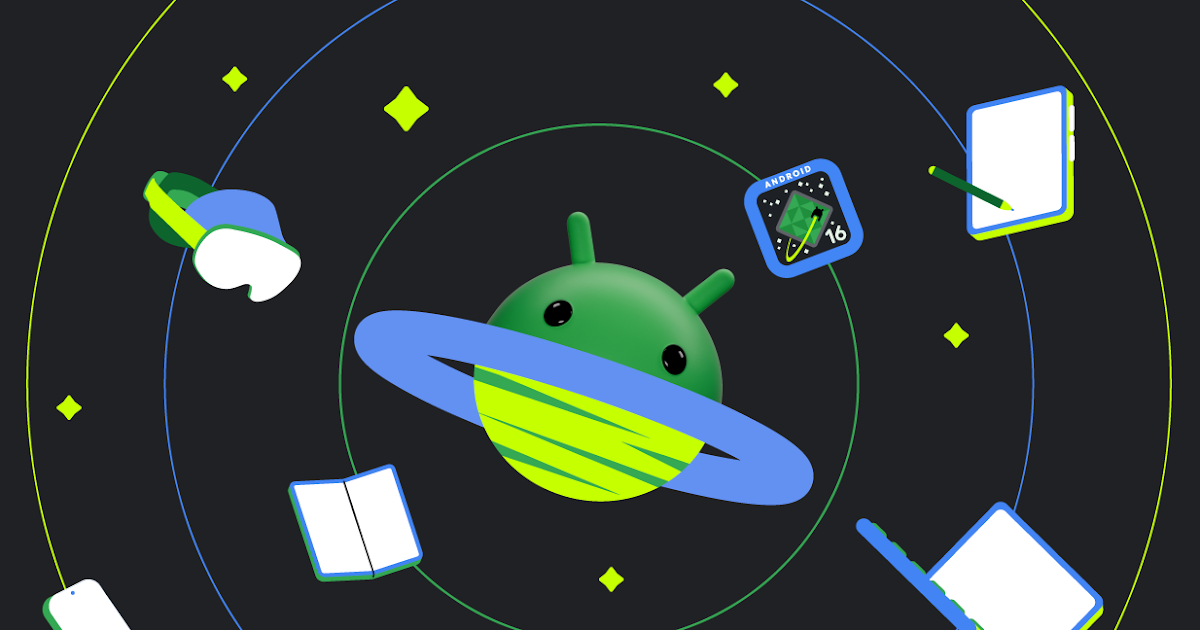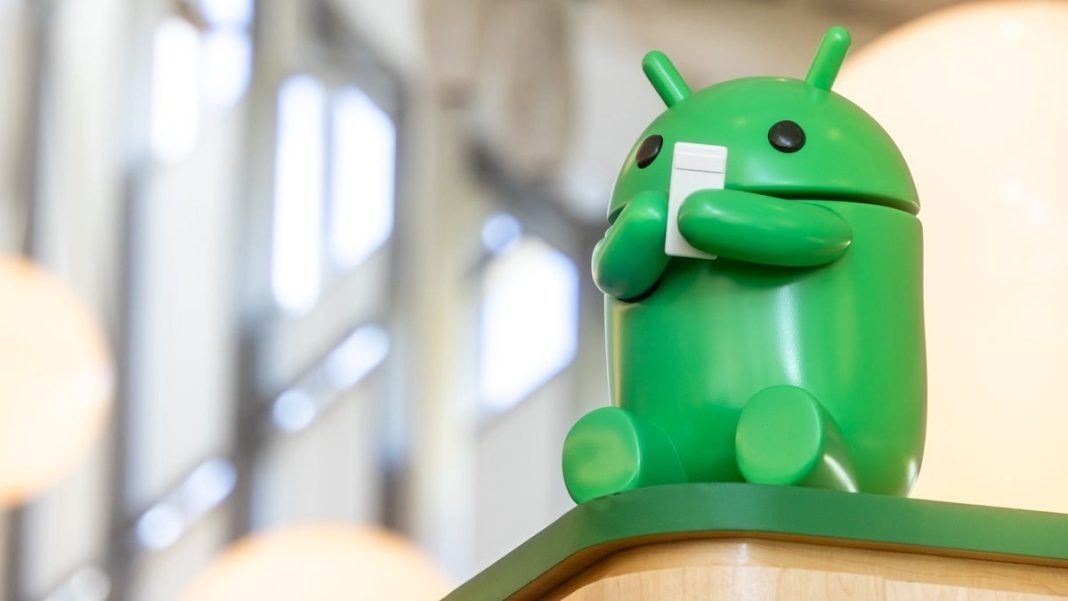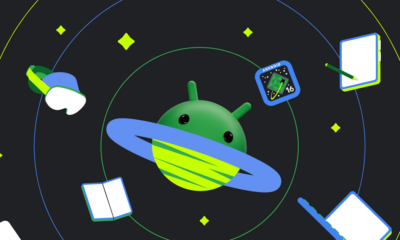Android
Leaked Tensor G5 and G6 Chip Configurations: Performance boosts and Android 16’s improved Quick Settings

Recent leaks have revealed exciting details about Google’s future Pixel chipsets, Tensor G5 and G6, along with improvements that Android 16 will bring to its Quick Settings panel.
Tensor G5 and G6: Core Configurations and Performance Improvements
The leaks, first reported by Android Authority, give us an inside look at the Tensor G5’s architecture. The chip, built on TSMC’s N3E process, continues to use the Arm Cortex-X4 CPU and adopts a 1+5+2 configuration. This includes one Cortex-X4 performance core, five Cortex-A725 cores (upgraded from the A720), and two unchanged Cortex-A520 cores. This shift should result in better handling of performance-heavy tasks while maintaining power efficiency.
One major change with the Tensor G5 is on the GPU front. Google will move away from Arm Mali and introduce a new GPU developed by Imagination Technologies. This GPU, known for its ray tracing capabilities, is expected to enhance graphic performance significantly, especially in virtual machines. Imagination Technologies previously partnered with Apple before Apple moved to in-house solutions, marking a notable return to prominence for the company.
In addition, Google is also boasting about a 14% performance boost in the Tensor Processing Unit (TPU), which handles AI and machine learning tasks.
Following this, Notebookcheck released additional details about the Tensor G6, which is set to power the Pixel 11. The G6, codenamed “Malibu,” will be based on TSMC’s more advanced N3P node and feature a 1+6 core layout. The flagship core will be the unannounced Cortex-X930 (expected to be branded as X5), alongside the Cortex-A730 cores. Interestingly, Google seems to be following Qualcomm’s lead with the Snapdragon 8 Elite by focusing more on performance cores rather than efficiency cores, suggesting that higher-performing cores can now manage energy consumption efficiently.
Another important improvement in the Tensor G6 is a new version of the Imagination Technologies GPU, which consumes 15% less power than its predecessor. While these leaks give us significant insights into Google’s plans, the exact state of this information is unclear, and things could change by the time these chips are officially announced.
Android 16: Quick Settings Overhaul
In addition to hardware advancements, Google’s upcoming software update, Android 16, is expected to bring an improved Quick Settings experience. Currently, in Android 15, users face an unorganized, two-column list when editing Quick Settings. Whether it’s a system tile or one provided by an app, finding and adding the right tile can be cumbersome, especially as more apps add their own shortcuts to the panel.
Leaked details found in the latest Android 15 beta indicate that Android 16 will introduce categorized Quick Settings tiles, making it much easier to organize and find tiles. These categories include:
- Accessibility – tiles like Color correction, Hearing devices, etc.
- Connectivity – tiles such as Data Saver and Hotspot.
- Display – likely containing screen-related settings.
- Privacy
- Provided by Apps – for third-party app tiles.
- Unknown
- Utilities – for tools like device controls and the QR code scanner.
The update aims to eliminate the frustration of scrolling through long, unorganized lists to find specific Quick Settings. While the current Android 15 update already shows some changes, it’s clear that this full revamp will likely be part of Android 16’s release.
This overhaul will streamline the user experience by automatically hiding categories that no longer have available tiles to add. For example, if you’ve already added tiles from the Utilities category, it will disappear from the editing view, reducing unnecessary clutter.
Conclusion
With both the Tensor G5 and G6 promising significant performance improvements and Android 16 bringing much-needed organization to the Quick Settings panel, Google is focusing on enhancing both its hardware and software experiences. Whether through better performance in gaming and AI tasks or a smoother interface for everyday settings, Pixel users can expect a more powerful and user-friendly experience in the years to come.
Android
Android 16 beta adds battery health info, Pixel Fold gets better at detecting opens and closes

Google has released the Android 16 Beta 1 update for Pixel phones, and it brings some helpful new features. One of the key additions is battery health information, which is now available in the settings. Pixel users can now see the battery’s manufacturing date, charge cycles, and overall health score. This can help people understand how well their battery is holding up over time. While this feature is currently hidden under developer options, it might be fully added in a future update.
At the same time, Google is also working to improve the Pixel Fold. With Android 16 Beta 1, there’s a new system that better detects when the phone is opened or closed. This new method uses the hinge angle to more accurately understand the device’s position. Unlike older systems that could be affected by software bugs or slow response times, this new one seems to be more reliable and faster.
These changes are important for people who use foldable phones like the Pixel Fold, as better hinge detection can lead to smoother app transitions and fewer bugs. And for all Pixel users, having detailed battery info can help with managing phone performance and deciding when it’s time for a battery replacement.
Overall, Android 16 Beta 1 focuses on giving users more control and smoother experiences, especially for those with foldables.
Android
Android 16 could bring colorful always-on display to Pixel phones

Google is working on Android 16, and it looks like the update could bring more color to the always-on display (AOD) feature on Pixel phones. Right now, the AOD mostly shows white text on a black screen. But a new setting found in the Android 16 Developer Preview hints at the ability to add colors to this display.
The new feature is called “AOD Preview,” and it includes a switch labeled “Color AOD.” While this setting doesn’t work yet, it suggests that Google might be planning to show colorful content even when the screen is in low-power mode.
This change could make AOD look more lively, maybe by adding color to the clock, notifications, or wallpaper. So far, it’s not clear exactly what will change or how customizable it will be, but the feature seems to be in early testing.
Samsung already has more colorful AOD options on its Galaxy devices, so this update could help Pixel phones catch up. Google often introduces new features first on Pixel devices before making them available to other Android phones.
Android 16 is still being developed, and many features are not ready yet. But if Color AOD becomes part of the final release, Pixel users could get a more vibrant and useful always-on display in the near future.
Android
Android adds quick shortcuts for do not disturb and video call effects

Google is testing two new shortcuts in Android that make it easier to control common features: Do Not Disturb mode and video call effects. These shortcuts are being added to the Android Quick Settings panel, which is the area you see when you swipe down from the top of your screen.
The first new toggle is for Do Not Disturb. Instead of opening the full settings menu, you’ll now be able to tap the shortcut to quickly switch between different DND modes. You can also long-press it to open full options. This makes it easier to silence notifications the way you want, especially if you have custom DND rules set up.
The second toggle is called “Video Effects”. This is useful for people who often use video calling apps like Zoom, Meet, or WhatsApp. When you tap it, it takes you to a page where you can turn on or off features like portrait blur, lighting adjustments, or filters that improve how you look during video calls.
These features are still being tested and might show up in future Android updates. Right now, some Pixel users with Android 14 QPR3 Beta 2.1 have seen these options. Google hasn’t confirmed when they’ll roll out to everyone, but they seem to be part of a plan to make Android tools more convenient.
In short, Google is trying to make it quicker and easier to manage your notifications and video call settings—all with just a swipe and a tap.
-

 Apps1 year ago
Apps1 year agoGboard Proofread feature will support selected text
-

 News1 year ago
News1 year agoSamsung USA crafting One UI 6.1.1
-

 News1 year ago
News1 year agoBreaking: Samsung Galaxy S22 may get Galaxy AI features
-

 News1 year ago
News1 year agoSamsung Galaxy S23 Ultra with One UI 6.1 and all S24 AI features revealed
-

 News1 year ago
News1 year agoOne UI 6.1 Auracast (Bluetooth LE Audio) feature coming to many Samsung phones
-

 News1 year ago
News1 year agoSatellite SOS feature coming to Google Pixel phones, evidence leaked
-

 Apps11 months ago
Apps11 months agoGoogle’s fancy new Weather app is finally available for more Android phones
-

 News1 year ago
News1 year agoGoogle Pixel evolves as Europe’s third best selling flagship






